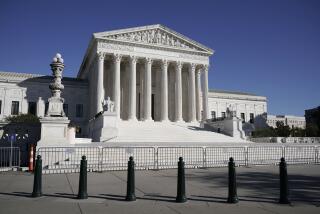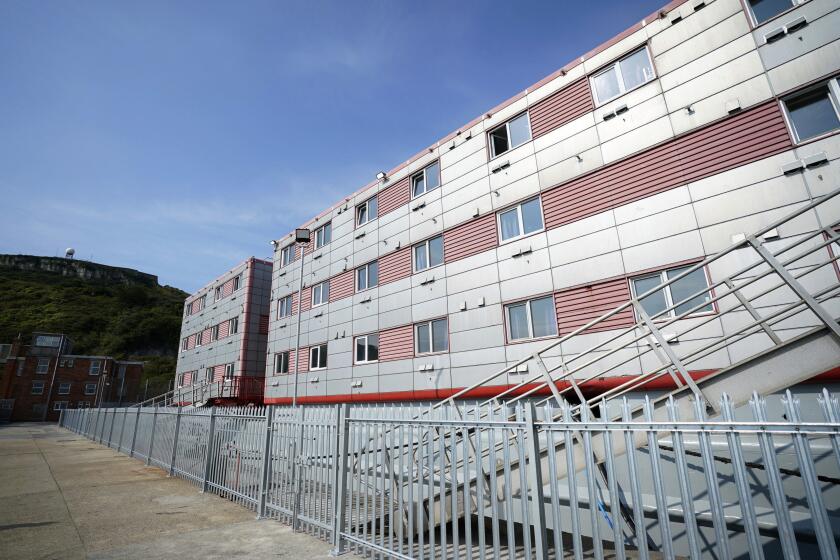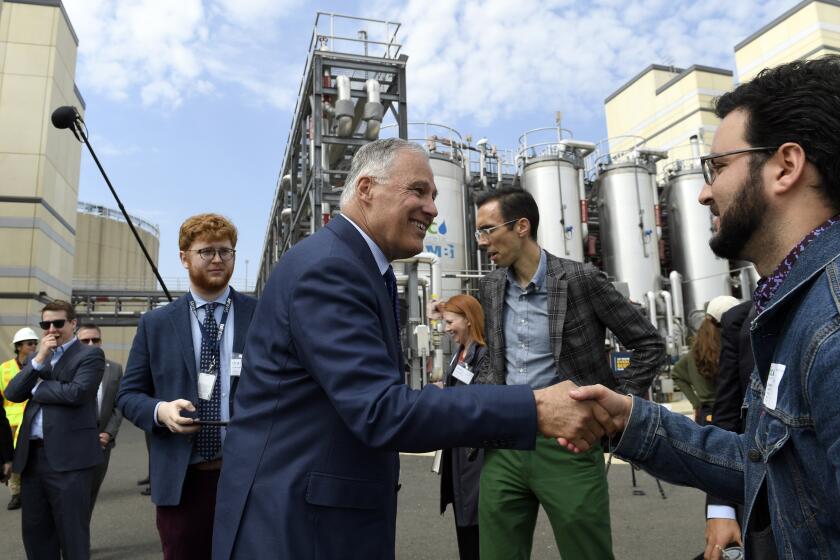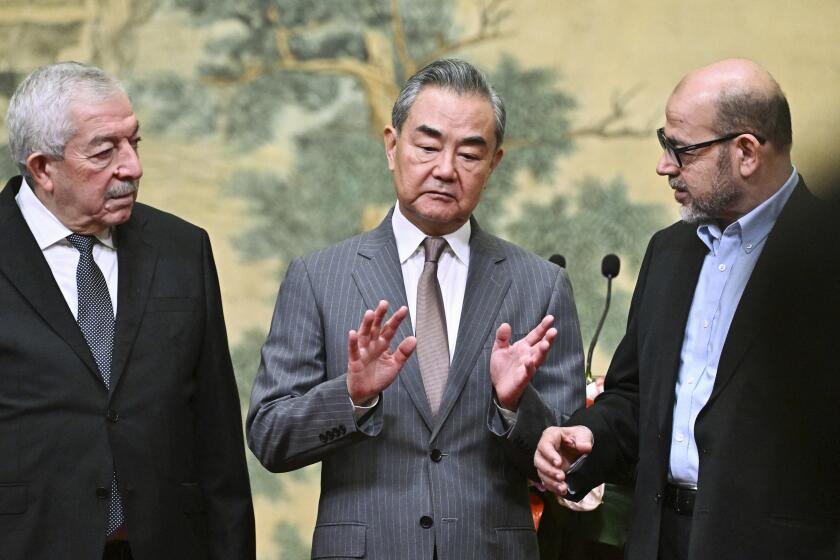Clinton Prohibits Smoking in Most Federal Buildings
President Clinton, moving to protect nonsmokers from the effects of tobacco, on Saturday declared a ban on smoking in all executive branch buildings, but he dropped a provision to prohibit lighting up around building entrances and courtyards.
“Cigarette smoking is the most single significant public health problem facing our people today,” Clinton said in his weekly radio address as he announced his order for smoke-free buildings within one year.
A draft of the executive order, which was the subject of news reports last week, would have banned all smoking within 50 feet of federal buildings. But administration officials determined that such a provision would be “going too far” in one step, a source familiar with the action said.
Such a prohibition, for instance, would have eliminated the protection from rain provided by awnings outside federal buildings, effectively barring any right to smoke.
Still, some government buildings could impose an outdoor smoking ban--Clinton’s order gives individual agency heads the discretion to “evaluate the need” for such a restriction.
Under Clinton’s order, agencies are also free to designate a smoking area inside buildings for employees. But such areas must be ventilated to the outside, and there must be no need for nonsmoking employees to enter them.
Clinton, who prohibited smoking in the White House soon after taking office in 1993, described his action as “the next step” in his administration’s attack on tobacco use.
“A year from today, every federal agency and office building, every visitor center at every national park, every facility owned or leased by the executive branch must be smoke-free,” Clinton said.
The order does not affect offices outside the executive branch--federal court buildings and congressional offices, many of which have taken smoking-elimination steps of their own, as have many private companies.
Vice President Al Gore, joining Clinton for the radio address, noted that the Environmental Protection Agency puts secondhand smoke in the same category as some of the most dangerous carcinogens.
The long-anticipated executive order is the latest in a series of actions Clinton has taken to curb the tobacco industry, once an interest that appeared beyond the reach of even the nation’s chief executive.
Next month, Clinton is scheduled to release his administration’s official reaction to an unprecedented agreement reached earlier this summer by the tobacco industry and 40 states.
In order to gain legal protections from health-related lawsuits against them, tobacco manufacturers agreed to pay $368.5 billion over 25 years to reimburse states for the cost of treating smoking-related illnesses. Also under the accord, the industry agreed to accept severe restrictions on marketing and advertising practices, to place much stronger health warnings on cigarette packages and to incur financial penalties if the rate of smoking by minors does not drop sharply in five years.
But numerous critics, including Clinton, have expressed various concerns about the proposed deal, which requires congressional action.
The president already has singled out a provision that restricts the Food and Drug Administration’s authority to regulate the industry as unacceptable. Under that provision, in order to reduce nicotine levels in cigarettes, the FDA would have to prove by “substantial evidence” that the reductions would significantly benefit public health, be technologically feasible and not create a black market.
More to Read
Sign up for Essential California
The most important California stories and recommendations in your inbox every morning.
You may occasionally receive promotional content from the Los Angeles Times.






